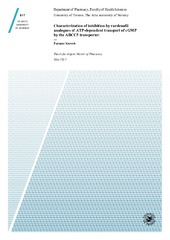Data-driven Approach for Passenger Assignment in Urban Rail Transit Networks: Insights from Passenger Route Choices and Itinerary Choices
Permanent link
https://hdl.handle.net/10037/36958Date
2025-04-28Type
Journal articleTidsskriftartikkel
Peer reviewed
Abstract
Congestion in urban rail transit (URT) systems often results in passengers being left behind on platforms due to trains’ reaching capacity. Distinguishing between the travel choice behaviors of passengers who board the first arriving train (Type I passengers) and those who are left behind (Type II passengers) in passenger assignment is essential for effective URT passenger management. This paper proposes a data-driven passenger-to-train assignment model (DPTAM) that leverages automated fare collection (AFC) data and automated vehicle location (AVL) data to differentiate between the travel choice behaviors of the two types of passengers. The model comprises two modules based on passenger travel choice behavior: the passenger route choice model (PRCM) and the passenger itinerary choice model (PICM). The PRCM employs a granular ball–based density peaks clustering (GB-DP) algorithm to estimate passengers’ route choices based on historical data, enhancing precision and efficiency in passenger classification and
route matching. The PICM incorporates tailored itinerary selection strategies that consider train capacity constraints and schedules, enabling accurate inference of passenger itineraries and localization of their spatiotemporal states. The model also estimates train loads and left-behind probabilities to identify congested periods and sections. The effectiveness of DPTAM is validated through synthetic data, demonstrating superior assignment accuracy compared to benchmarks. Additionally, real-world data from Chengdu Metro reveal the impact of congestion on travel behavior and effectively identify congested periods and
high-demand stations and sections, highlighting its potential to enhance URT system efficiency and passenger management.
Publisher
WileyCitation
Wen, Lv, Yu. Data-driven Approach for Passenger Assignment in Urban Rail Transit Networks: Insights from Passenger Route Choices and Itinerary Choices. Journal of Advanced Transportation. 2025Metadata
Show full item recordCollections
Copyright 2025 The Author(s)
Except where otherwise noted, this item's license is described as Attribution 4.0 International (CC BY 4.0)
Related items
Showing items related by title, author, creator and subject.
-
Characterization of inhibition by vardenafil analogues of ATP-dependent transport of cGMP by the ABCC5 transporter.
Kuresh, Farzane (Master thesis; Mastergradsoppgave, 2015-05-27)Background: Clinical studies have reported overexpression of PDE5 and elevation of intracellular cyclic GMP in various types of cancer cells. ABCC5 transports intracellular cGMP out of the cells with high affinity, while PDE5 inhibitors prevent high affinity cGMP efflux by inhibiting ABCC5. Increasing intracellular cGMP levels through inhibition of PDE5 and PDE5 export activity is hypothesized ... -
Transport av pasienter med akutt koronarsyndrom fra Bodø til Tromsø
Pedersen, Ingemar (Master thesis; Mastergradsoppgave, 2015-09-01)Bakgrunn: Pasienter med iskemisk hjertesykdom i Salten henvist til perkutan koronar intervensjon (PCI) i Tromsø utgjør en stor og økende del av ambulanseflytransportene med anestesilegefølge mellom Bodø og Tromsø. Luftambulansetjenesten ANS og Helse Nord har uttrykt bekymring for denne utviklingen og spurt om PCI-tilbud i Bodø burde være en løsning. Vi ønsket derfor å undersøke denne transporten, ... -
In Vitro and in Silico Competitive Binding of Brominated Polyphenyl Ether Contaminants with Human and Gull Thyroid Hormone Transport Proteins
Hill, Katie L.; Mortensen, Åse-Karen; Teclechiel, Daniel; Willmore, William G.; Sylte, Ingebrigt; Jenssen, Bjørn Munro; Letcher, Robert James (Journal article; Tidsskriftartikkel; Peer reviewed, 2017-12-28)Tetradecabromo-1,4-diphenoxybenzene (TeDB-DiPhOBz) is a highly brominated additive flame retardant (FR). Debrominated photodegradates of TeDBDiPhOBz are hydroxylated <i>in vitro</i> in liver microsomal assays based on herring gulls (<i>Larus argentatus</i>), including one metabolite identified as 4<i>″</i>-OH-2,2<i>′</i>,2<i>″</i>,4-tetrabromo-DiPhOBz. Chemically related methoxylated tetra- ...


 English
English norsk
norsk



